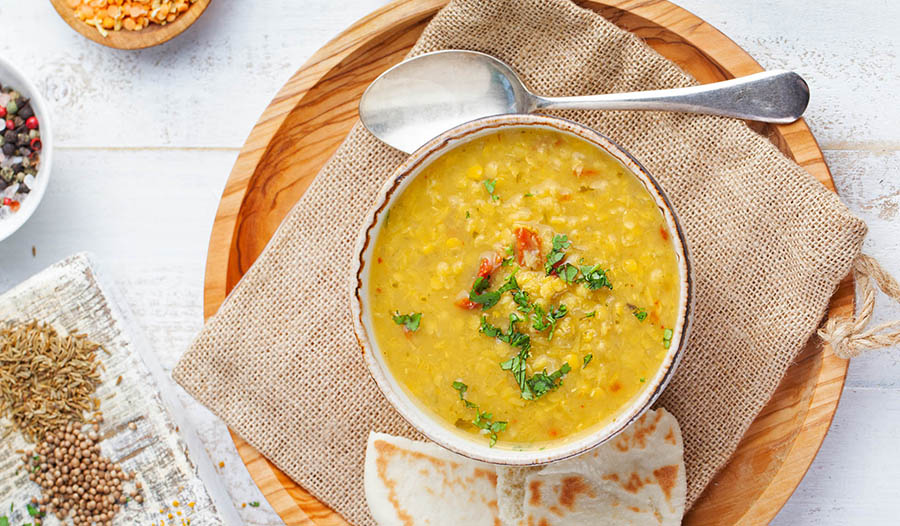The Health Benefits of the Kitchari Cleanse
DISCLAIMER:This blog does not intend to provide diagnosis...

Cleanses like the Master Cleanse (a mixture of lemon water, maple syrup and cayenne pepper) and the 10-Day Green Smoothie Cleanse may be all the rage but can be unrealistic to maintain. They are often endorsed as a way to quickly lose weight, brighten skin, reboot the body, and more, and many folks are jumping on the detox bandwagon hoping for miraculous results.
While these chic, new cleanses promise amazing transformation, there are drawbacks to such extreme regimes. They’re typically low in calories, so they tend to put the body in starvation mode, resulting in the loss of lean muscle tissue and a lower metabolic rate. Plus, many cleanses are devoid of essential nutrients and are hard to follow because they lack calories. A shortage of calories can trigger low blood sugar, which can cause fatigue, weakness, headaches, hunger and irritability.
There’s an older, wiser way to detox and reset your body. It’s called the kitchari cleanse. Kitchari, pronounced KICH-ah-ree, is a nourishing detox food made from split yellow mung beans and white (long-grain or basmati) rice. Enjoyed for thousands of years, this Indian comfort food is often served with seasonal vegetables and made with healing, warming spices like turmeric and ginger, which aid digestion. Used in Ayurvedic medicine (one of the world’s oldest holistic healing systems, which embraces the idea that health and wellness depend on a balance between body, mind and spirit), kitchari is a traditional cleansing food.
Energizing and Healthy
Unlike typical cleanses, which tend to be low in protein, the combination of beans and rice make kitchari a complete protein. Kitchari also contains adequate carbohydrates and calories to maintain blood sugar levels and provide energy and satiety.
Good for Everyone
As the first solid food that is given to babies as well as a preferred food to nourish the elderly and people who are ill, kitchari is well tolerated and easy to assimilate. The white rice, which has the husk removed, makes kitchari easy to digest, yet the mung beans provide adequate fiber (1 cup has about 15 grams) to help eliminate toxins from the gastrointestinal tract. Since it is so easy on the gut, consuming kitchari over an extended period of time gives your digestive system a break and frees energy for natural detoxification. Kitchari also balances and works for all three doshas (Vata, Pitta and Kapha)—the Ayurvedic mind-body types or constitutions that express a blend of the physical, mental and emotional characteristics found in all individuals.
A Natural Detox Food
The mung beans in kitchari are astringent, a quality that is believed to naturally help remove toxins. Numerous symptoms and diseases can result from the accumulation of too many toxins—substances found in water, air and food, especially processed foods, that create irritating or harmful effects in the body. Over time the accumulation of toxins can leave you feeling sluggish; cause inflammation, headaches or digestive problems; and even increase the risk of obesity, arthritis, cancer and heart disease.
Preparation Is a Snap
Making kitchari is quick, simple and easy. Simply wash the beans and rice, place in a pot with dry roasted spices, add water, bring to a boil and reduce heat and cook for 30–40 minutes until everything is soft. The main ingredients—mung beans and rice—are also inexpensive, and if you don’t have the time to make a fresh pot daily, it will keep if refrigerated for three or four days. Several spices can be added to stimulate Agni, the Ayurveda term for the digestive fire or spark that breaks down food, including ginger, turmeric, fennel, fenugreek, coriander, cloves and asafetida.
How to Do a Kitchari Cleanse
The first step is to decide how many days you want to cleanse for. Traditionally a kitchari cleanse is done for three to four days when only kitchari is eaten for breakfast, lunch and dinner with no snacks.
To give your body a head start, before beginning the cleanse cut down on foods and beverages that typically cause physical imbalances, such as sugar, meat, processed foods, alcohol and caffeine.
If possible, do the cleanse over a long weekend so that you can rest and support the detoxification process. Don’t be concerned if you experience aches and pains and emotional ups and downs. This is normal and a sign that your body is detoxifying.
Be easy with yourself. Sip warm water and herbal teas throughout the day to aid detoxification. You can consume additional Ayurvedic herbs as supplements to support your body. Engage in gentle exercises such as yoga, qigong or tai chi or walk outside. Soaking in a warm Epsom salt bath as you listen to soothing music can help you relax and detox. Eat dinner early if possible and get a good night’s sleep.
After the cleanse, you may notice a decrease in cravings for sugar, animal products, caffeine and processed foods. Ease back into your old eating habits, perhaps eating more fruits, vegetables and other healing foods and avoiding the foods that tend to set you off balance.
Kitchari Recipe
Ingredients:
- 1 cup split yellow mung dal beans
- ½ cup long grain or basmati rice
- 1 Tbs. fresh ginger, grated
- ½ tsp. black mustard seeds
- 1 tsp. turmeric powder
- ½ tsp. fennel seeds
- ½ tsp. fenugreek seeds
- ½ tsp. ground coriander
- Pinch of asafetida (optional)
- ½ tsp. salt
- 7–10 cups of water
- 1 small bunch cilantro leaves, chopped
Instructions:
- Wash rice and mung dal beans.
- Place spices in a large pot over medium heat. Toast until you start to smell the spices, 1–2 minutes.
- Add the rice, mung dal, salt and water. (You can vary the amount of water depending on how thick you want your kitchari to be.) Bring to a boil. Stir ingredients together and boil for 10 minutes. Reduce heat to medium-low. Cover and cook until beans and rice are soft (about 30–40 minutes). Add additional salt to taste. Scoop into bowls and top with cilantro.

 By Dr. Ellen Albertson, PhD, RDN, NBC-HWC
By Dr. Ellen Albertson, PhD, RDN, NBC-HWC


